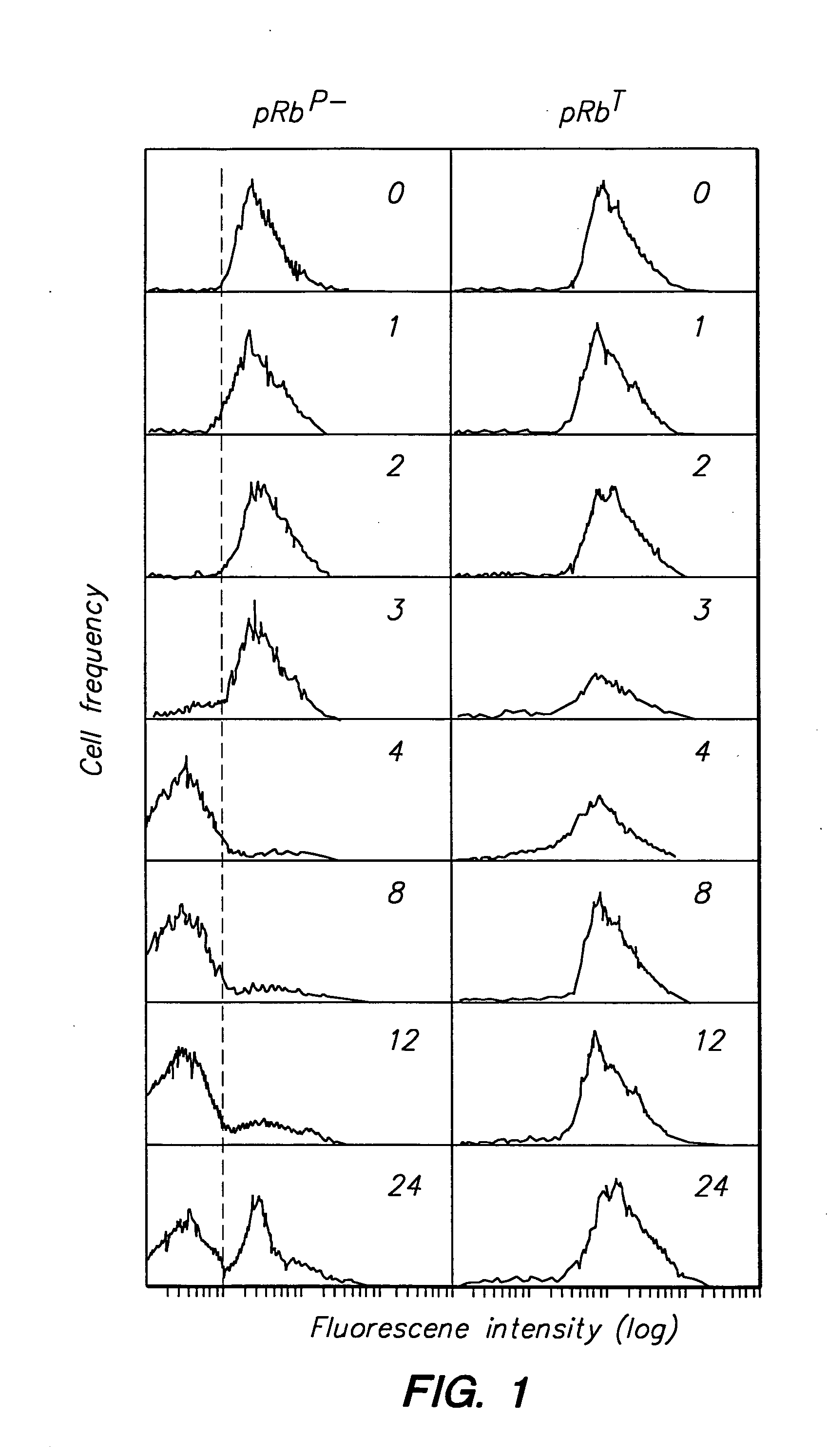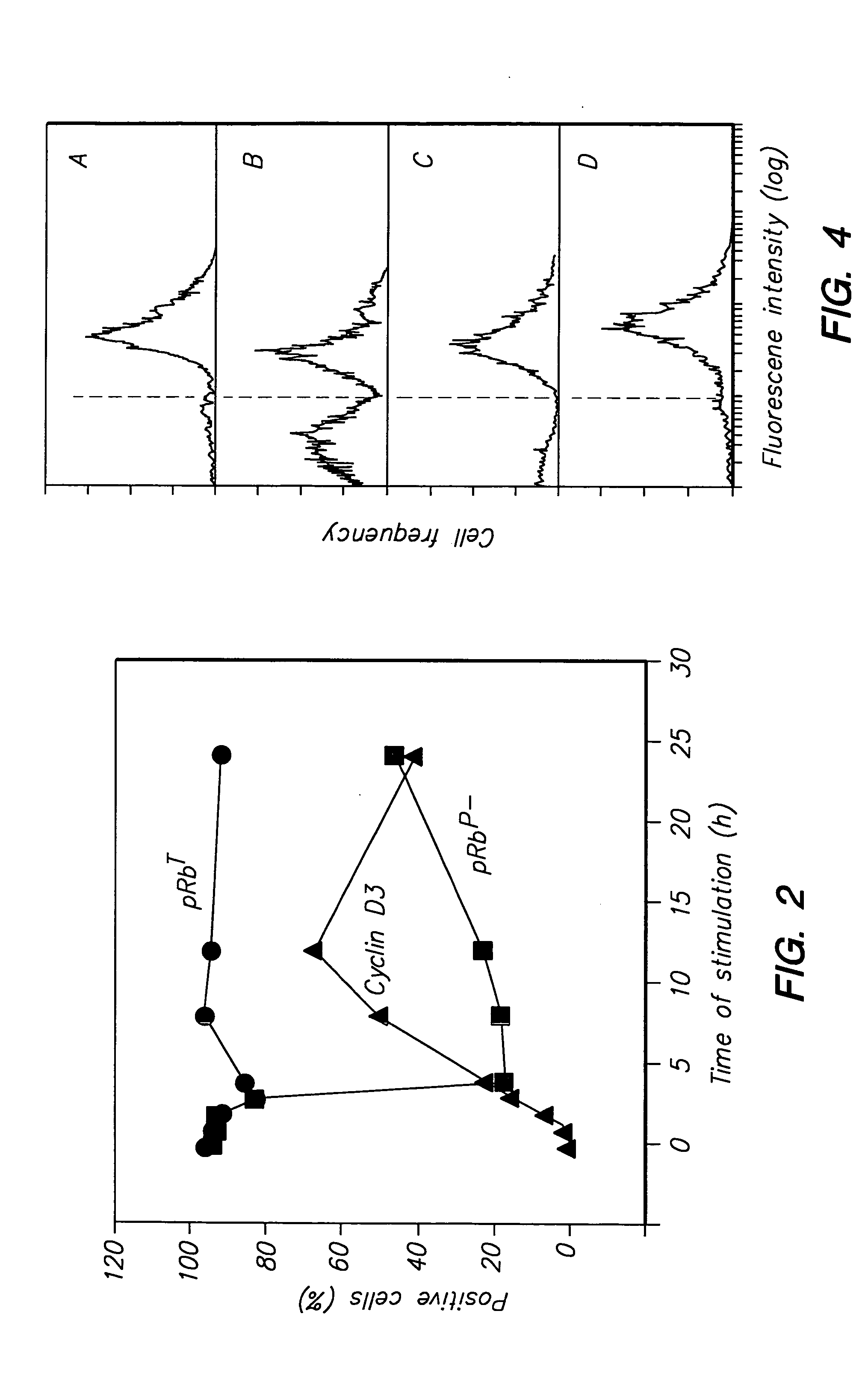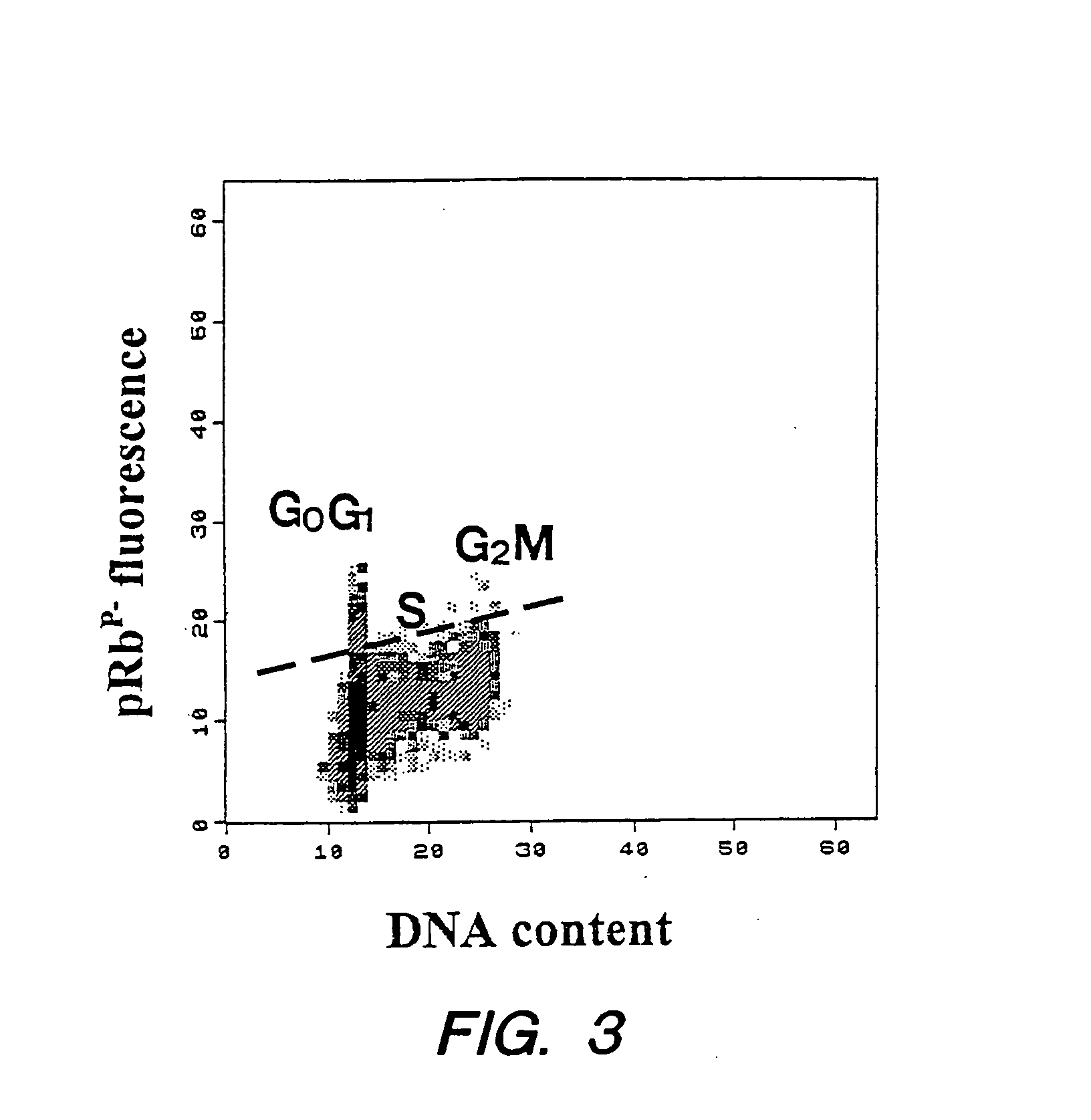Detection of protein conformations in single cells
- Summary
- Abstract
- Description
- Claims
- Application Information
AI Technical Summary
Benefits of technology
Problems solved by technology
Method used
Image
Examples
example 1
Flow Cytometric Measurement of pRB Protein Phosphorylation in Mitogen-Stimulated Lymphocytes
[0137] Cells, Drugs
[0138] Human peripheral blood lymphocytes, obtained from healthy volunteers by venipuncture, were isolated by density gradient centrifugation. The cells were washed twice with phosphate-buffered saline (PBS), resuspended in RPMI 1640 medium supplemented with 10% fetal calf serum, 100 units / ml penicillin, 100 μg / ml streptomycin and 2 mM L-glutamine at a density of 106 cells / ml, treated with 10 μg / ml of phytohemagglutinin (PHA) and incubated at 37.5° C. in the mixture of 95% air and 5% CO2 for the periods of time shown in the respective figure legends. The medium, supplements, and antibiotics were obtained from Life Technologies (Grand Island, N.Y.), PHA from Sigma Chemical Co. (St. Louis, Mo.).
[0139] Stock solution of staurosporine (STP; Kamiya Biomedical Co., Thousand Oaks, Calif.) was made in dimethyl sulfoxide (DMSO) at a concentration 0.2 mM and was stored at −20° C. ...
example 2
Flow Cytometric Measurement of pRB Protein Phosphorylation in HL-60 Cells During Proliferation and Differentiation
[0167] Cells
[0168] The human promyelocytic leukemic cell line HL-60 was kindly provided by Dr. Harry A. Crissman of the Los Alamos National Laboratory (Los Alamos, N. Mex.). The cells were maintained in RPMI 1640 supplemented with 10% fetal calf serum, 100 units / ml penicillin, 100 μg / ml streptomycin, and 2 mM L-glutamine at a density between 2 and 8×105 cells / ml at 37.5° C. in the mixture of 95% air and 5% CO2 for the periods of time described in the legends to the respective figures. During the exponential phase of cell growth, at densities below 8×105 cells / ml, the mean duration of the cell cycle of these cells is 23 hours (estimated as described in Darzynkiewicz, “Mammalian cell cycle analysis,” in The Cell Cycle: A Practical Approach, P. Fantes and R. Brooks, Eds., pp. 45-68 (Oxford Univ. Press, Oxford, UK, (1993)), and the mean duration of G1, S, G2, and M 11, 9, ...
example 3
Multiparameter Flow Cytometric Assay of pRB Phosphorylation in Mechanistic Studies of Cytostatic Arrest of Lymphoma Cells By ONCONASE®
[0200] Cells
[0201] Human histiocytic lymphoma U-937 cells were purchased from American Type Culture Collection (Manassas, Va., USA) and were maintained in RPMI 1640 medium supplemented with 10% fetal bovine serum, 100 U / ml of penicillin, 100 μg / ml streptomycin and 2 mM glutamine (all from Life Technologies, Grand Island, N.Y., USA). The suspension cultures were passaged by re-seeding the cells at a density of 1×105 cells / ml. The cells were studied during their exponential and asynchronous growth, generally within 72 hours of their re-seeding in medium with fresh serum, before reaching density of 8×105 cells / ml. The cultures were periodically tested for Mycoplasma infection by staining of cytocentrifuge preparations with the DNA fluorochrome 4,6-diamidino-2-phenylindole (DAPI; Molecular Probes, Eugene, Oreg., USA).
[0202] ONCONASE®, provided by Alface...
PUM
| Property | Measurement | Unit |
|---|---|---|
| Conformational barrier | aaaaa | aaaaa |
| Flow rate | aaaaa | aaaaa |
| Fluorescence | aaaaa | aaaaa |
Abstract
Description
Claims
Application Information
 Login to View More
Login to View More - R&D
- Intellectual Property
- Life Sciences
- Materials
- Tech Scout
- Unparalleled Data Quality
- Higher Quality Content
- 60% Fewer Hallucinations
Browse by: Latest US Patents, China's latest patents, Technical Efficacy Thesaurus, Application Domain, Technology Topic, Popular Technical Reports.
© 2025 PatSnap. All rights reserved.Legal|Privacy policy|Modern Slavery Act Transparency Statement|Sitemap|About US| Contact US: help@patsnap.com



